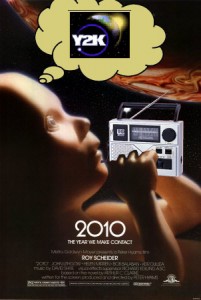It was the summer of 2007. Not moments after the Republican far right triumphed over President Bush’s hated immigration reform law than Representative Mike Pence, Republican of Indiana, introduced a rider to a budgetary bill in the House that would forbid funding for the Federal Communications Commission to enforce the Fairness Doctrine.
The bill overwhelmingly passed the House on Thursday, June 26. This was odd, because the FCC hadn’t enforced the policy in 20 years.
Broadcaster freedom
The Fairness Doctrine was a regulation tailored to the mid-20th century’s Internetless, cable TV-less, three network video broadcasting world. It required license owners to present opposing viewpoints on issues of public importance. In the 1980s the FCC began to pull back from the rule, issuing a “Fairness Doctrine Report” in 1985 that suggested that the policy inhibited rather than encouraged controversial dialog over the air waves.
Two years later an appeals court ruled that since Congress had never actually passed legislation authorizing the Fairness Doctrine, the FCC did not have to enforce it. In response, the House and Senate passed a Fairness Law, but the Senate could not override President Reagan’s veto, or the subsequent veto of President Bush I. The FCC abandoned the practice.
Yet absurdly, two decades later conservatives couldn’t scream loudly enough about the policy. John McCain, who had taken a beating for his support of the Bush administrations immigration proposals, quickly chimed in with a Broadcaster Freedom Act that went beyond Pence’s largely symbolic one year budget rider. It would just by plain old Act of Congress prevent the FCC from enforcing the concept, once and for all.
McCain’s sudden passion for the cause can be read as an attempt to get right again with the Right. But from whence came this terror over a decades dead policy? Oklahoma Republican Senator and noted global warming denialist James Inhofe declared that he overheard California Senator Barbara Boxer and New York’s Hillary Clinton plotting something against talk radio in a Capitol Hill elevator. Various statements sympathetic to the Fairness Doctrine made by John Kerry, Nancy Pelosi, and Diane Feinstein were paraded out for all to see and dread.
And so the red state blogo-punditocracy went completely beer nuts over the issue, ranting that if the Doctrine was restored, Al-qaeda might be able to demand equal time over the airwaves. Bloggers promised that those sneaky Dems were just watching and waiting, biding their time regarding the Fairness Doctrine, plotting to retake the White House. And then . . . gotcha!
“The bottom line is that, without a massive public outpouring in favor of the First Amendment, comparable to the opposition to the immigration bill, the Broadcaster Freedom Act will die,” one warned. “And that means that with a Democrat in the White House, the Fairness Doctrine, as well as limits on conservative ownership of media properties, will be passed into law.”
Bwahaha!
The problem, of course, was that the ultimately successful Democratic contender, Barack Obama, announced that he opposed the Fairness Doctrine. Ditto, declared his FCC Chair pick, Julius Genachowski. So too did Washington, D.C.s leading reform group, Free Press. But the Fearness Doctrine crowd found a precious artifact that allowed them to keep the crusade going, a study published by The Center for American Progress and Free Press titled “The Structural Imbalance of Talk Radio.”
“[T]he Fairness Doctrine was never, by itself, an effective tool to ensure the fair discussion of important issues,” the paper argued . . . .
“Simply reinstating the Fairness Doctrine will do little to address the gap between conservative and progressive talk unless the underlying elements of the public trustee doctrine are enforced, in particular, the requirements of local accountability and the reasonable airing of important matters. The key principle here is not shutting down one perspective or another—it is making sure that communities are informed about a range of local and national public affairs.”
Aha! They now declared. The Obama Nazis are going to push the Fairness Doctrine through the back door via regulations requiring more localism and diversity, and rules limiting the percentage of broadcast stations any entity can own!
It’s all coming together now
Sorry, Fearness Doctrine mongers. To this day, there is no Fairness Doctrine at the FCC. And so preoccupied is the agency with broadband and wireless issues, that it has left those diversity and localism proposals in a box way up in the attic. In the end, The Great Fairness Doctrine Panic was about a weakened and internally divided Republican party, circling the wagons around its most crucial resource—conservative talk radio and TV—and desperately glomming onto any cause to maintain unity with its base.
The main casualty of this hysteria been constructive and practical discussion about what the FCC can do, not to monitor the politics of radio via the back door, but to encourage more localism and connections to communities through the front.



